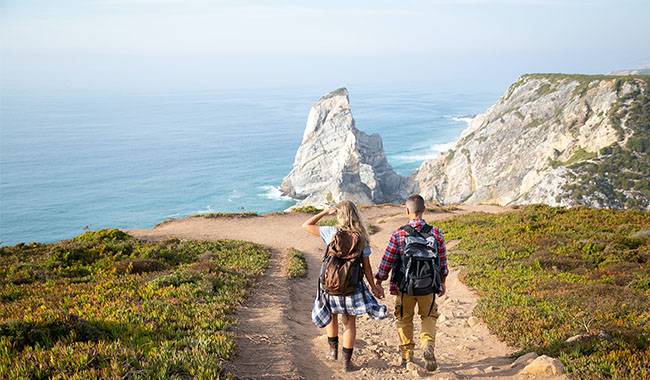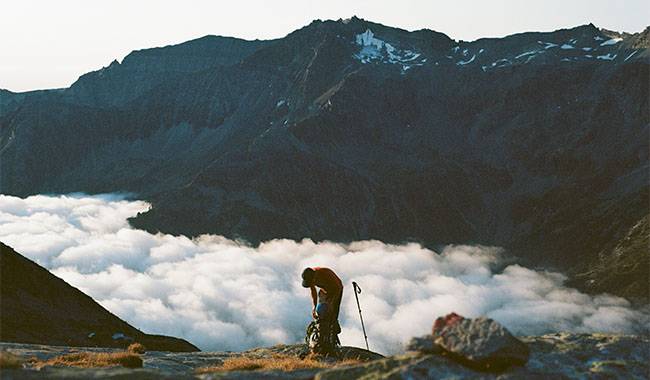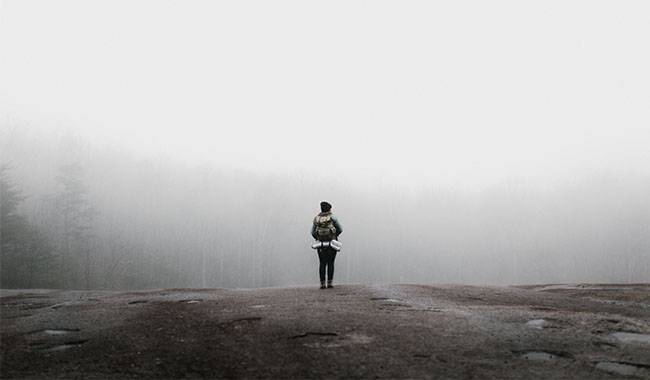
All seasoned hikers start somewhere. Due to inexperience, extremism, and recklessness, they set fire to their tents, lose their equipment and suffer from bad weather. We have collected typical punctures of novice travelers so that the next generation of travelers, looking at the mistakes of others, refute the quotes and draw the right conclusions. The stories are based on real events. All matches are random. Do not repeat! You will learn more about 12 Mistakes of Hiking for Beginners by the LCNOutdoors article.
Did not learn to use the navigation
A number of brave travelers returned from a winter forest hike in the Caucasus through a familiar route. By nightfall, the monthly precipitation had dropped, and the road and all landmarks were swept: no moss was visible on the trees, and as botanists have proven, they not only grow north but also without the usual switchbacks. The girls had a GPS navigator with tracks. But no one had taught the members of the “camp instruction” how to use it. The unfortunate visitors spent two days on the slopes without food and fuel. They drowned all the snow in their mouths and had to sleep in wet sleeping bags. They were rescued by their more experienced friends. The ladies didn’t reach a kilometer before the area with the least amount of snow depth began. It’s a shame.
How not to make a mistake
If you can’t read a map, use a compass, use a GPS navigator or determine the base point of the sun, don’t go beyond the bounds of civilization. But it is better to learn.
Failure to check equipment
A boy takes a replica of a popular cooking system he bought the day before to a European parade. But the team did not prepare either tea or hot food. Poor quality valves were screwed crookedly on the cylinders, so the gas did not enter the burners. The weather was also bad: two consecutive days of drizzle and icy wind. The orienteer cursed aloud his pettiness and shuddered as he spilled judicial tea on the food station. The idea of returning to the store with a complaint was not warm either – the pot was smoked tightly over the fire on a mandatory night. Fortunately, it was a minor accident and not a two-week trek ……
How not to make a mistake
Double-check all equipment during the collection process when available: in the country, in the PVD, or at home. This rule applies not only to new things but also to those that have been in the closet for a long time. So much so that half an hour before departure, do not be surprised by the state of the old puffs that your sister’s Chihuahua does not like.
Take away the extra stuff
The story takes place in the 1970s, during the heyday of the Soviet tourism movement. Several young climbers are exploring the outskirts of Sochi. The group includes a self-taught staff photographer. They had a separate backpack for their gear, film, and a homemade tripod. It turned out to be quite weighty. The owner of the expensive equipment refused to divide the luggage into sections for the entire group, referring to his friend’s irresponsible attitude toward valuables. The photographer, sweating, fell behind and delayed the tourists, but commiserated himself. While descending into the gorge of the Hosta River, the “golden cargo” fell into a chasm. It was retrieved, but the contents could not be restored to working condition. The interesting thing about this story is that no one saw the photographic masterpiece of his comrades before and after the unfortunate event.
How not to make a mistake
Heavy loads are a constant attribute of the novice hiker. No matter how much capacity a backpack can hold, that capacity will always be missed by the “first-timer”. Make a list of what you need for your trip. So you don’t forget anything and can optimize the amount of content and reduce its weight on paper.
Where you can save money
- Photo and video equipment. There will be no time to change multiple lenses while driving. Professionals advise novice photographers to choose one: wide-angle, telephoto, or universal, depending on preference.
- cloth. A clean T-shirt every day is the whim and whim of the inexperienced tourist. Things can be washed in rivers and streams and washed often. For multi-day trips, one pair of warm socks and two pairs of running socks will suffice. The main thing is not to forget the waterproof layer and protection from cold and wind.
- Food. Today, any visitor can buy freeze-dried meat and vegetables, homemade stews, or factory-made light vacuum packs. Let summer residents buy tin cans.
- Equipment. We choose the lightest backpacks, tents, and sleeping bags – appropriate, of course, for the conditions of a given trip. We replace the steel and hot plate with a single layer of titanium. For more information on how to reduce the weight of your pack so you can hike without pain and tears, see the article “The Basics of Easy Mobility”.

Ignore the weather forecast
Another lightweight orienteer who pursued the ultralight trend intentionally did not bring warm clothing. They only had membrane jackets and energy bars to keep warm. After 5 hours of continuous rain, leaking mahjong shoes, soaking wet backpacks, and wilderness winds blowing deep into their presumptuous souls, chocolate and intense exercise were beyond saving. By the middle of the second night, our heroes were a little hotter than the water in the roadside ditch, exhausted, physically drained, and with legs that refused to move. We had to leave the route and tuck into our sleeping bags to get the temperature back to normal. These men admitted that if they had taken a warm fleece layer, their bodies wouldn’t have had to expend resources to generate extra energy for heating.
How not to make a mistake
- pay close attention to the weather forecast from a reputable source, preferably abroad.
- Don’t ignore the warmth. Even the thinnest fleece under a moisture barrier will help keep you warm, and in a critical situation it will save you from hypothermia.
- If a lot of ford is planned for the route, you may consider buying socks with membrane or neoprene. With your feet in them, you won’t freeze even if you get wet.
Not taking care of your feet
One person went camping wearing rubber boots and wool socks. By the end of the day, the rubbing, thick thread and stitches had worn his feet out. Neither band-aids nor foot wraps could make up for this. He had to say goodbye to the group and return home with his head down. And the hiking friends returned to their new avatars with plenty of emotion and pictures.
How not to make a mistake
When hiking, your feet are most vulnerable to stress. Any discomfort on their part can cause you to leave the route. To avoid a tragic outcome, you need to.
- go hiking only in worn-out shoes.
- choose socks for different conditions of use and temperatures: from synthetic, moisture-wicking to warm merino wool.
- don’t ignore the patch at all inconvenient, it’s never too much. It’s best to stop again and spend 10 minutes gluing the problem area instead of bringing the problem to corns, pain or blue nails.
Choose a bad place to pitch your tent
If it rains, where will the water collect? The answer is obvious, but as it turns out, not for everyone. Two tourists pitched their tent on a gently sloping ridge to escape the unforgiving summer sun. Murphy’s Law worked – it started to rain. With nowhere to run for their stuff, the dazed tourists had to endure and watch as the tent mats floated around, raincoats and bottles of drinking water floated by as they carefully carried them down the hill. “Be careful,” flood survivors now strongly advise newcomers.
How not to make a mistake
One rule: Choose the safest place for yourself and your belongings. Dry trees, lowlands, the possibility of falling rocks, proximity to reservoirs, animal tracks and fires should be a concern.

Get your sleeping bag wet
Cave explorers suffer from wet sleeping bags more often than others: the humidity in caves is almost always 100%, with rivers, lakes and waterfalls. Therefore, the waterproof quality of the sleeping bag often determines the success of the expedition. Several campers were careless in packing their personal belongings and got their sleeping bags wet. They didn’t waste precious fuel drying their gear. To do so, they used moisture-absorbing calcium carbide for their carbonized lamps for lighting. Satisfied, the cavers dried their gear, dumped the substance, and went to bed. In the morning, they discovered that the carbide residue had “pulled” liquid not only from the material, but from their feet as well. The skin was cracked and there were open wounds. The planned work in the cave had to be suspended and a mobile hospital bed had to be set up in the underground base camp.
How not to make a mistake
Protecting the sleeping bag from moisture is the first commandment for visitors. Put it in a dry bag, in extreme cases you can use plastic bags.
Lighting a burner in the tent
Exhausted after a long trek, the donkeys decide to have a nightcap. They don’t want to leave the warmth and comfort of their bivouac, so they arrange to light a multi-fuel burner inside. In the dark, they mixed the bottles together, poured the gasoline into a pot, and set it on fire. The gasoline vapor was ignited and the nylon melted instantly. For a few more nights, the travelers lay in their sleeping bags and looked through the holes in the tent ceiling at the constellations of the Milky Way.
How not to make a mistake
None of the instructions for using a burner are allowed in the tent. This can threaten at least property and at most life. In addition to burns and property damage, you can be poisoned by carbon monoxide. This process takes place unconsciously, “exhaustion” occurs slowly, the person loses consciousness, and if you don’t find yourself in the open air, it could very well lead to fatal results. 9.
Not taking into account the problem of drinking water
The group was trekking through the low mountains without drinking water. For more than two weeks, the area had been in a “major drought”: no rain, and all the springs and creeks had dried up. The team flooded the snow and collected water from tadpoles in standing puddles, then quickly managed to treat diarrhea and restore the water-salt balance. It turned out that a herd of cattle had recently passed through the area to get to the pastures above.
How not to make a mistake
Plan your route correctly, follow the weather forecast, and stock up on water if possible. Take a portable filter and be prepared with disinfectant tablets and medication to relieve symptoms of poisoning. At high altitudes, visitors don’t encounter such problems – the snow is clean there.
Failure to take wildlife into account
A few years ago in El Gaki Nature Park, a bear attacked the tent of a tourist. He again smelled food left by inexperienced hikers coming to the camping site. Two women and two children were injured. They were taken by helicopter to the nearest hospital in Abakan.
How not to make a mistake
Wild animals may be afraid of people, but don’t miss the opportunity to find easy prey. Bears can smell food waste from eight kilometers away. To avoid encounters with forest animals, you must pack your food carefully, do not store it in your tent, and do not burn leftovers in the fire or carry them with you.
Who can hurt a person
- bears often visit tent camps and meetings with them often end in death or serious injury.
- foxes usually do not attack first, unless they are infected with rabies, but they can eat anything that lies
- rats give visitors headaches. Spoiled by rodents “pockets” – a classic story. They are like a joke with a beard, and if they do not eat everything, then they will definitely bite. In addition, it is necessary to protect not only food stocks but also equipment from them.
Poor route planning
Before setting out on an easy route in the Altai Mountains, a group of beginner hikers did textbook preparations. They informed the “duty officer” of their return date, mapped out the main points and the shortest route to civilization in case of an emergency evacuation. On the way back they were delayed by bad weather and they had to wait a few days. So they did not make contact on the specified date or the day after. The friends got worried and started a search and rescue operation. They bought tickets, contacted area teams, and prepared to fly to the site. That’s when the missing tourists arrived at the nearest settlement and were told that they could cancel the PSRR. so because of a small mistake in timing, relatives lost sleep, money, and nerve cells.
How not to make a mistake
It is better to plan your trip in advance. Even if this is a day trip from a conditioned nursing home to the nearest picturesque location and back. If the eyes are not trained and have no travel experience, planning a hike is a must.
What to consider
- the characteristics of the area. This information will help in selecting equipment and clothing, choosing where to spend the night, issuing permits to enter nature reserves or wildlife sanctuaries, and crossing borders.
- Route details. You need to know the starting and ending points, the presence of water sources, shallows, and highly technical sections along the route. This information can be glimpsed in the blogs of experienced travelers. They often share lists of necessary equipment, tracks, life hacks, and even daily life.
- movement speed and duration. They are needed to calculate the date of drop and fall, report to contacts, IWC, or rescue teams working on the ground. If the weather is bad, it is recommended to leave it for a few more days.
Left behind trash
There will be no stories about inexperienced travelers. Each of us can tell at least a dozen. The more we go into the wilderness, the more we negatively impact the environment: we destroy the habitat of animals, plants, and birds. Try to leave no trace of what you’ve left behind and take your trash with you.